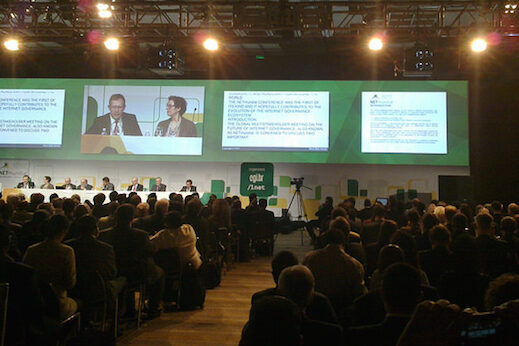The Internet is neither purely public nor private, but combines public and private networks, platforms, and interests. Given its complexity and global importance, there is clearly a public interest in how it is governed, and role of the public in Internet governance debates is a critical issue for policymaking. The current dominant mechanism for public inclusion is the multistakeholder approach, i.e. one that includes governments, industry and civil society in governance debates. Despite at times being used as a shorthand for public inclusion, multistakeholder governance is implemented in many different ways and has faced criticism, with some arguing that multistakeholder discussions serve as a cover for the growth of state dominance over the Web, and enables oligarchic domination of discourses that are ostensibly open and democratic. In her Policy & Internet article “Searching for the Public in Internet Governance: Examining Infrastructures of Participation at NETmundial”, Sarah Myers West examines the role of the public in Internet governance debates, with reference to public inclusion at the 2014 Global Multistakeholder Meeting on the Future of Internet Governance (NETmundial). NETmundial emerged at a point when public legitimacy was a particular concern for the Internet governance community, so finding ways to include the rapidly growing, and increasingly diverse group of stakeholders in the governance debate was especially important for the meeting’s success. This is particularly significant as the Internet governance community faces problems of increasing complexity and diversity of views. The growth of the Internet has made the public central to Internet governance—but introduces problems around the growing number of stakeholders speaking different languages, with different technical backgrounds, and different perspectives on the future of the Internet. However, the article suggests that rather than attempting to unify behind a single institution or achieve public consensus through a single, deliberative forum, the NETmundial example suggests that the Internet community may further fragment into multiple publics, further redistributing into a more networked and “agonistic” model. This…
The Internet is neither purely public nor private, but combines public and private networks, platforms, and interests. Given its complexity and global importance, there is clearly a public interest in how it is governed.


